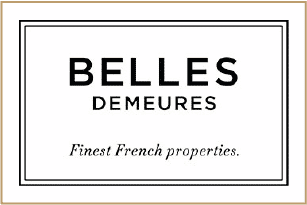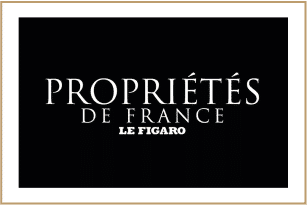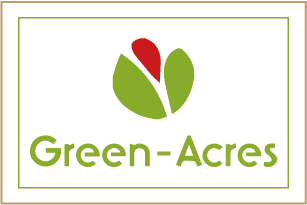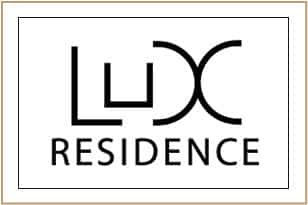What is prestige real estate? This term refers to old houses. Even if there is no “Prestige” label today, a property that commands respect or admiration by its charm is qualified as “exceptional property”. More recent properties tend to be classified as “luxury”.
The castles
France has approximately 40,000 castles, which 400 to 600 are for sale each year at prices ranging from €500,000 to €30,000,000. In the Middle Ages, the castle or château-fort was a fortified feudal residence. It was above all a military construction used to defend the lords and villagers. From the Renaissance onwards, with the end of the wars, the architecture changed. Castles became royal or seigneurial residences, surrounded by turrets, parks and French gardens. The primary purpose of these prestigious properties was to support art and to display the wealth of the lord.
The 18th century castles developed into large mansions with towers, in the countryside, with a
living area of more than 800m², where the village lord lived.
Castles with vineyards are still very popular, especially with Chinese clients who see the potential for profitability. The date of construction is also a factor in the buyer’s choice.
Castles built between the 16th and 18th centuries are the most sought-after and therefore the most expensive properties. The attraction of a castle is based on very personal reasons: a childhood dream, a love of old stones, an image of social success, protection of heritage, etc. All these lovers of prestigious properties have one thing in common: a real and lasting passion. However, the future buyer should be warned. Without the small flame that allows for great things to happen, the investment threatens to be doomed to failure.
[lien bien=”1228″ contenu=”13th to 18th century castle 15 minutes from Bergerac with swimming pool and tennis court” titre=”Beautiful property for sale in Dordogne, castle from XIII to XVIII centuries, on 5,5 ha with swimming pool and tennis” afficher-image alt-image=”Aerial view of the castle with swimming pool and tennis court”]
The manor houses
The first manor houses appeared in the 15th century, at the end of the Hundred Years’ War, a time of renewed prosperity. There are more than 80,000 manor houses in France, particularly in the north and centre.
A manor house generally comprises a main building and outbuildings, and has a surface area of 600 to 800 m².
Manors are often compared to small castles. Like them, they are prestigious. In the past, they were beautiful, spacious houses built with quality materials. They were inhabited by noblemen or “gentiles”. This also explains the name “gentilhommière” sometimes used to name a manor house.
It is distinguished from the castle by its use. Farming was of primary importance and was administered by the lord of the manor. Unlike the lords, the owners of the manor houses lived solely from their crops. They do not have the authority to exercise a military or administrative function.
[lien bien=”70″ contenu=”Family manor house for sale in Dordogne, near Périgueux” titre=”Family manor house of about 380m², dominating its 3,5 ha of wooded park.” afficher-image alt-image=”Aerial view of a family manor house for sale with its wooded grounds”]
The mansions
In the 19th century, the mansion was originally inhabited by notables or people from the bourgeoisie. This explains why they are also called “Maison bourgeoise”. They were first found in urban areas, but later developed in the countryside. Mansion houses are recognisable by their square base.
Generally on two levels, they have a living area of approximately 500 to 600 m², with reception rooms with high ceilings and bedrooms on the upper floor. To find out more,
see our article on mansions.
[lien bien=”24″ contenu=”18th century bourgeois property for sale in a splendid bastide” titre=”Prestige Périgord residence: 18th century bourgeois property with wooded park” afficher-image alt-image=”Exterior view of the manor house for sale – Périgord Noir”]
Houses of character
A house with character combines charm, quality construction and is different from classic houses. We speak of a traditional house.
Like the “Chartreuses bergeracoises” and fermettes, they draw their materials from local resources: pebbles, bricks, tuffeau… Even if a certain amount of subjectivity remains, real criteria exist: the prestige and
materials used in the construction must be first-rate, as well as the layout of the rooms.
A house with character, or a charming house, will generally have a large garden, a swimming pool, a pool house…
[lien bien=”655″ contenu=”Charming old stone house for sale in the centre of the Dordogne” titre=”Charming old stone house in the centre of the Dordogne on 3.3 hectares” afficher-image alt-image=”Exterior facade of a stone house of character – for sale”]
Luxury flats
This type of prestigious property is mainly
located in large cities, but not only. It is of course qualified by large volumes, the quality of the materials, but also by the services, the environment and an exceptional location. They are particularly found in Haussmann-style buildings. It is not unusual for these prestigious flats to have large terraces. This is a top-of-the-range flat located on the top floor of a building and which has a terrace and a roof garden with a privileged urban panoramic view. There are also luxury flats in [lien bien=”57″ contenu=”16th century castle” titre=”Dordogne: near Bergerac, flat in the centre of a 16th century village castle”].
Atypical properties
An atypical property is defined mainly by its originality. The term covers several types of properties. In the constructions listed above, there are habitats that can be considered as atypical, but Anthouard Immobilier wishes to focus on
mills and
winegrowing properties.
[lien bien=”07″ contenu=”Quality property and vineyard in Bergerac – Périgord Pourpre” titre=”Bergerac: Quality property and its vineyard, on about 10ha, swimming pool, caretaker’s house” afficher-image alt-image=”Exterior view of a property for sale in Bergerac – 1h from Bordeaux”]
[lien bien=”821″ contenu=”Old mill for sale of 350m2 with gîtes near Bergerac (Lalinde)” titre=”Lalinde: Old mill of 350m2 and its gîtes” afficher-image alt-image=”Exterior facade of the old mill for sale with swimming pool”]
The definition of prestige real estate is based on more than one criterion. Prestige real estate evokes quality and refinement. These notions are likely to evolve and take into account the trends, the economic and cultural evolutions.
That is why Anthouard Immobilier will always be there to accompany you in your purchase of prestige.



